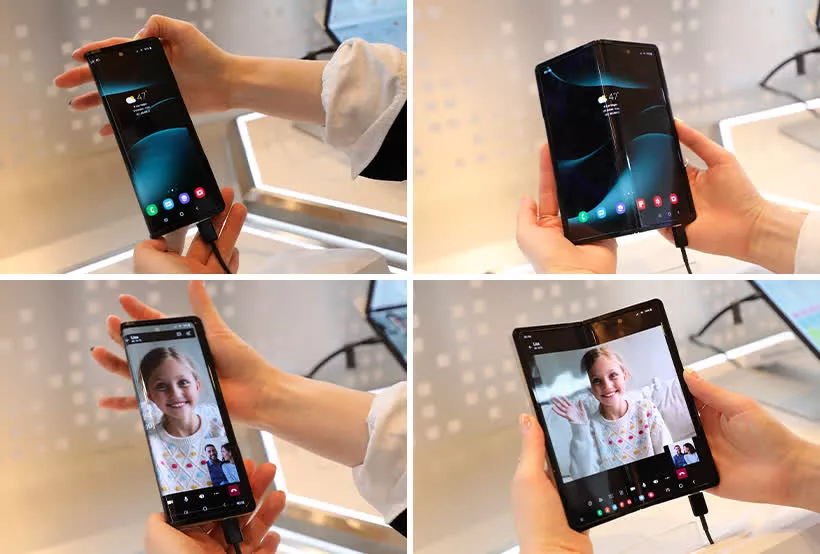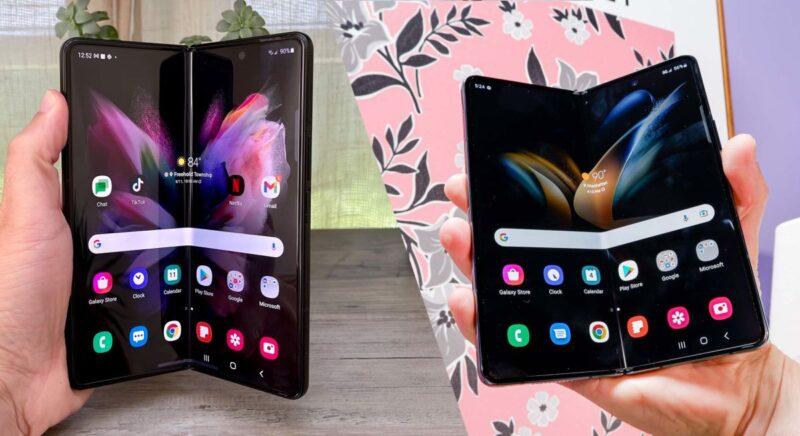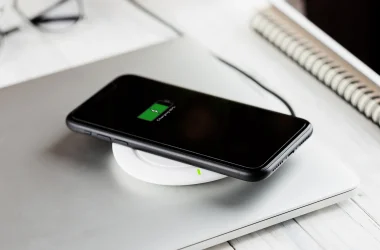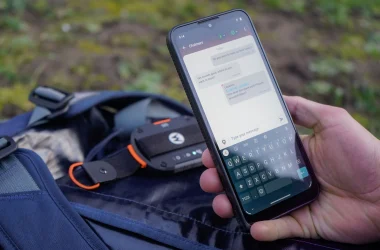Samsung has recently unveiled a new technology that could change the way we interact with our devices. The company has shown off a 360-degree folding display, which allows for the screen to fold in both directions. This means that the device can be folded in half and still function as a fully-operational screen.
The new display technology is called the Samsung Infinity Flex Display, and it uses a new folding mechanism that allows for a smooth and seamless transition between the folded and unfolded states. The screen is made of a flexible OLED material, which is able to bend and fold without breaking or damaging the display.
One of the key features of the 360-degree folding display is its ability to run multiple apps at the same time. When the device is folded in half, users can interact with different apps on each half of the screen. This means that they can watch a video on one half while browsing the internet on the other half. When the device is unfolded, it turns into a larger, tablet-like device with a larger screen for more immersive experiences.

The new display technology also has the potential to change the way we interact with our devices. Samsung has demonstrated how the device can be folded in various ways to create different user experiences. For example, it can be folded in half to create a small, pocket-sized device that can be easily carried around. It can also be folded in a Z-shape to create a stand for watching videos or making video calls.
The 360-degree folding display is not just limited to smartphones. Samsung has also shown how the technology can be applied to other devices such as tablets and laptops. This could mean that in the future, we will see foldable laptops and tablets that can be easily carried around and used on-the-go.
Applications of Samsung’s new folding display
Samsung’s new folding display, also known as the Samsung Infinity Flex Display, has a number of potential applications in various industries. Some of the most promising applications of this technology include:
- Foldable smartphones: The most obvious application of the Samsung folding display is in the development of foldable smartphones. These devices can be folded in half, making them more compact and easier to carry around, but can still be unfolded to reveal a larger display for improved viewing and productivity.
- Foldable tablets: Another potential application of the Samsung folding display is in the development of foldable tablets. These devices can provide the benefits of a larger screen while still being portable and easy to carry.
- Foldable laptops: Samsung’s folding display technology could also be used to create foldable laptops, allowing users to have a larger screen for working on the go without sacrificing portability.
- Wearable devices: The folding display technology could also be used in the development of wearable devices, such as smartwatches or fitness trackers, that can be folded up for easy storage and transport.
- Automotive displays: The Samsung folding display could also be used in the development of automotive displays, providing a larger and more immersive viewing experience for drivers and passengers.
- Foldable televisions: Samsung has also hinted at the potential for foldable televisions, which could provide a more flexible viewing experience for users.
Comparison with other folding display technologies
Foldable display technology has been rapidly developing in recent years, with various companies competing to create the best possible foldable display. Some of the other folding display technologies currently available or in development include:
- Rollable Displays: This technology uses a rollable screen that can be expanded or contracted as needed. This technology has been demonstrated by LG with its Rollable OLED TV.
- Dual-Screen Devices: These devices have two separate screens that can be used independently or in tandem. Microsoft’s Surface Duo is an example of a dual-screen device.
- Hinged Displays: This technology uses a hinge to allow a display to fold in half. This is similar to the design of the traditional clamshell-style laptop. Samsung’s Galaxy Z Flip and Motorola’s Razr are examples of hinged displays.
- Foldable E-Ink Displays: This technology uses e-ink displays that can be folded, allowing for more flexible and portable devices. The Chinese company, Onyx Boox, has developed some e-ink readers with foldable screens.
Implications of Samsung’s new folding display technology
Samsung’s new folding display technology has significant implications for the consumer electronics industry and beyond. Here are a few potential implications:
- New form factors for mobile devices: The most immediate impact of Samsung’s folding display technology is the ability to create new form factors for mobile devices. Folding phones can provide the best of both worlds: the portability of a traditional smartphone when folded, and a larger, tablet-like display when unfolded.
- Increased screen real estate: Folding displays allow for larger screen real estate without sacrificing portability. For example, a 7-inch tablet can be folded in half to create a device with a 3.5-inch screen that is much more pocketable.
- New use cases: The larger screens offered by folding devices enable new use cases, such as multi-tasking, split-screen apps, and more immersive gaming experiences.
- Enhanced productivity: Larger screens and new form factors can enhance productivity. For example, a folding device could be used as a secondary display for a laptop, providing additional screen real estate for productivity tasks.
- Potential for reduced device clutter: Folding devices could potentially reduce the number of devices that consumers need to carry around. For example, a folding phone that unfolds into a tablet could replace both a smartphone and a tablet.
The new display technology is still in the early stages of development, but Samsung has announced that it plans to release a device using the technology in the near future. The company has not yet announced when the device will be released or what it will be called, but it is expected to be a premium device with a high price tag.
In conclusion, Samsung’s 360-degree folding display is a revolutionary technology that has the potential to change the way we interact with our devices. It offers a new level of flexibility and versatility, allowing users to switch between different modes and user experiences. The technology is still in the early stages of development, but we can expect to see a device using this technology in the near future. With this, Samsung is pushing the boundaries of what is possible with mobile device display and design, and it will be exciting to see how this technology evolves in the future.






